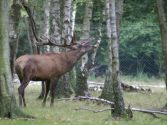 Click on the thumbnail to enlarge the image. Maybe you thought this deer was belling in rut; But no! He’s just bored to death during a photo session near the park border and he’s merely yawning. |
Some of you may have noticed the lack of updates in the recent days. Apart from some personal unforecasted obligations I had to serve, it comes from a heavily occupied weekend: I had the possibility to do a two-day photo session in the Rambouillet forest, organized by the ASCPF 50km South of Paris.
In the middle of the rutting season for deers, it seemed a good idea to go hunting with people used to this kind of hobby and to take advantage of excellent conditions. The photo session is organized by the Association Sportive de Chasse Photographique Française to initiat some people to the association and the art of photo hunting with big tele-lenses. For a mere 50€ (covering 2 days), a complete newby like me is guided in a 180ha park (the Espace Rambouillet, managed by the French Office National des Forêts) where we can find boars, deers, roe-deers and fallow-deers roaming freely but slightly less afraid of man than in the open forest (Despite that, there is strictly no chance to reach and touch the animals; This is not even a zoo).
This is indeed an engrossing experience for a photographer interested in animal life. The advice provided by Guy Mallet and Daniel Trinquecostes are precise, concise and to-the-point, for hardware as much as for hunting techniques. But this is not a class course about photo hunting; It is mostly oriented toward practical application (and they can be long for a city dweller with few sports habits like me who is not used to slow walking in the woods and in wet pits during hours). And nature photographers are nice people indeed. We knew that most photographers like to share their passion; This even more visible in this context.
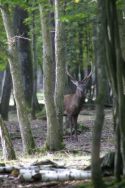 Click on the thumbnail to enlarge it. |
All in all, these two day produced a few dozen images. The camera is not stressed, the flash memory cards are not flooded (with data), but some good snapshots can be collected if you apply a few basic rules:
- No need to rush and press the trigger from afar; Be patient.
- A good telelens is required: A 300mm on a digital camera or a 400mm on an analog camera seems to be the bare minimum to reach if you want to grab a few good images.
- Light is missing in the forest and under vegetal cover, all means to compensate this issue are welcome: stabilized lens or camera sensor, tripod (or – even better I think – a monopod), large aperture lens (my clear Minolta APO 300mm f/4 was most welcome and much more confortable than the Sigma 400mm f/5.6). And, when time comes to press the trigger, hold your breath for half a second.
- Camouflage and smooth quietness are needed. I don’t believe that the camouflage nets and similar green-looking garments are not absolutely necessary, but white, and bright and light colours are the first major error (you quickly learn why so many seasoned wildlife photographers use gaffer tape and sock-like to cover the tube of white or pale grey lenses).
Now, I let you look at the other images I could produce. But I also want to thank Guy for having let me try an anti-noise camera cover and Eric for his monopod that I could use during the whole weekend (I am convinced now: Next time, I’ll come with my own; This is a great tool) and a lens cover to hide the whiteness of my Minolta APO 300mm f/4.
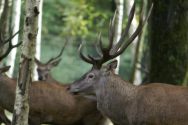 |
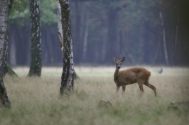 |
| Click on the thumbnails to enlarge them. | |
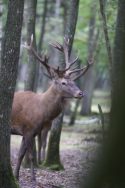 |
|
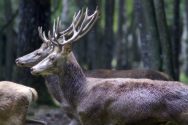 |
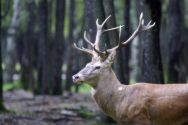 |
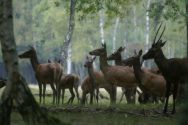 |
|
There are also birds of prey in large cages in the Espace Rambouillet. A few more images that weren’t really taxing (approaching the animal was a granted right attached to the entrance ticket;-)):
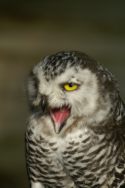 |
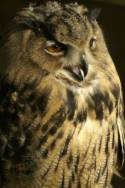 |
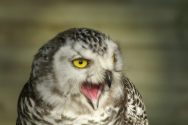 |
|
Leave a Reply